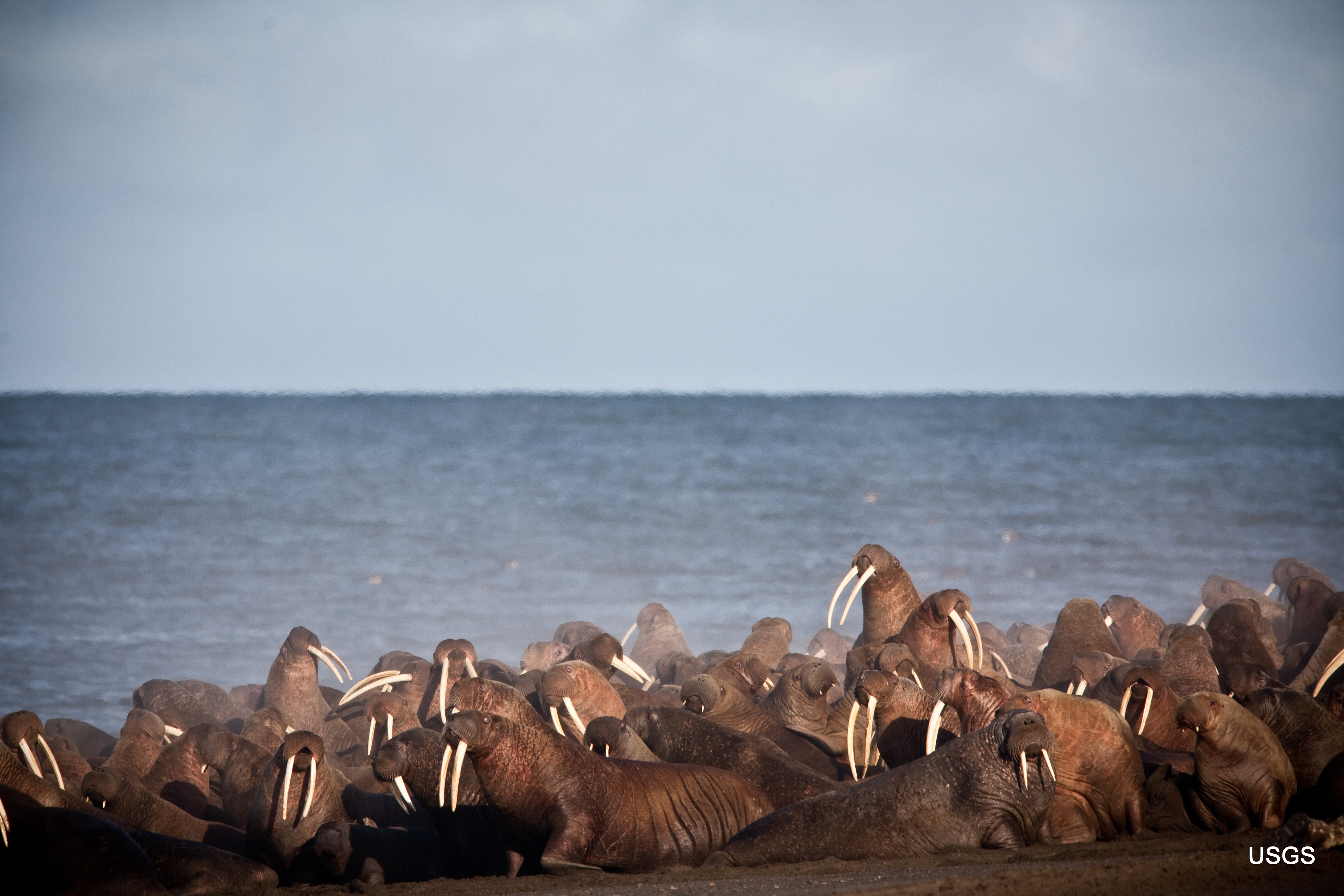Environmental group sues to secure Endangered Species Act protections for walruses
The Center for Biological Diversity filed a lawsuit to overturn a Trump administration decision not to list Pacific walrus as endangered.

Five months after the Trump administration rejected an Endangered Species Act listing for the Pacific walrus, an environmental group has sued to try to reverse that decision.
The Center for Biological Diversity filed a lawsuit on Thursday in U.S. District Court in Anchorage that seeks to compel Endangered Species Act protections for the iconic Arctic marine mammal.
Pacific walruses are dependent on sea ice to use as platforms while resting during food foraging, giving birth and nursing, molting and other key life functions, and that ice is dwindling, the lawsuit says. “The best available science shows that climate change is destroying the sea ice the species needs to survive,” the lawsuit says.
Efforts to list the Pacific walrus under the Endangered Species Act started with a 2008 petition from the Center for Biological Diversity. The U.S. Fish and Wildlife Service in 2011 determined that the listing for the species was “warranted but precluded,” resulting in the Pacific walrus being put on a list of candidate species awaiting new protections.
The October decision concluded that the Pacific walrus population is showing resilience to ice loss and changing behavior to haul out on land.
That decision contradicted scientific information, the Center for Biological Diversity said.
“We were disappointed, but not entirely surprised given how hostile to wildlife the Trump administration has been,” Emily Jeffers, an attorney for the organization, said in an email.
She said the loss of walrus habitat is obvious this year, with sea ice on track for a record-low maximum and ice particularly scarce in the Bering Sea, where Pacific walruses are during the January and February breeding season. “Since the Fish and Wildlife Service found that walrus listing was warranted in 2011, the case for listing has only grown stronger — so in that sense, it is surprising that the FWS made a complete reversal in the face of such overwhelming data,” she said.
The prospect of more oil development in the offshore Arctic did not factor into the decision to file the lawsuit, Jeffers said in the email. “However, we believe that the Endangered Species Act can provide important protections to walruses from the impacts of oil exploration in the Arctic,” she said.
The service, in its rejection of listing, made numerous mistakes, the lawsuit contends. It failed to consider different parts of the walruses’ range or distinct populations; it limited its projections of the “foreseeable future” to the year 2060 instead of 2100, even though sea ice is expected to keep declining through the century; it was inconsistent in its analysis of future trends, dismissing projections of habitat loss as speculative but accepting predictions that walruses would adapt to loss of sea ice; and it makes conclusions that “flatly contradict or inaccurately represent the available scientific data and are unsubstantiated,” the lawsuit argues.
Andrea Medeiros, a spokeswoman for the Fish and Wildlife Service in Anchorage, said the agency would not comment on the pending litigation.